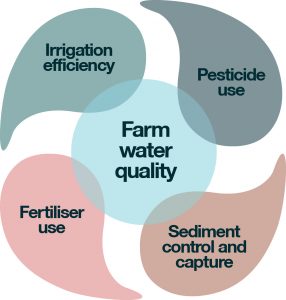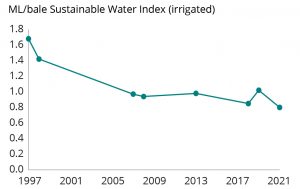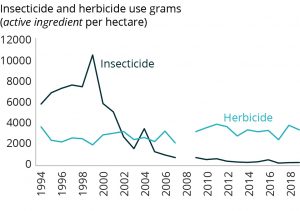Cotton Australia: Water stewardship and sustainable cotton production in the Fitzroy Basin
Since becoming the first Australian agricultural industry to independently assess its environmental impacts in 1991, the Australian cotton industry has been quietly improving its sustainability.
Managing sustainability, like growing cotton, is a complex process. The Australian cotton industry has a sustainability framework called PLANET. PEOPLE. PADDOCK. which coordinates a whole-of-industry approach to managing the environmental, social and economic factors most important to its stakeholders.
One of the environmental topics managed by the industry is water use. The industry’s water goal matches the United Nations Sustainable
Development Goal: to significantly increase water use efficiency over time, within sustainable river and ground water system withdrawal limits.
Here, Emerald cotton grower Graham Volck describes how he manages water quality and water efficiency on his farm. The 4 key cotton farming parameters influencing farm water quality are shown in Figure 1.

Irrigation efficiency
All irrigation water leaving fields is captured in water storages and re-used. Rain events of 25mm or less are similarly captured. This attribute of farm design recognises the value of water and significantly reduces the opportunity for environmental harm. Maintaining
good water quality in farm storages reduces the risk of environmental impacts if water leaves the farm in large rain events, and is important for the wellbeing of the wildlife that farm storages support. Regular water quality testing and preventing off-farm water
quality impacts are part of the industry’s myBMP Best Management Practice.
Capacitance moisture probes placed in fields to a depth of 80 cm, measure daily crop water use. This allows for timely crop irrigations optimising water use and minimising run-off.
Nationally, cotton growers used 52% less water to grow a bale of cotton in 2021 compared to 1997 (Figure 2).

Fertiliser use
Given the expense of fertilisers, considerable effort is taken with application methods and timing to ensure fertiliser remains where it is placed and is readily available to the crop.
Soil nutrient testing is regularly undertaken prior to and during the growing season to match target yields to applied fertiliser quantities as part of myBMP.
Water quality testing of farm storages examine levels of nitrates, phosphates as well as EC and Total Dissolved Salts. Tests to date on my farm have shown levels posing no environmental threat to the quality of natural freshwater bodies.
Pesticide use
The adoption of genetically modified cotton and Integrated Pest Management has resulted in a 95% reduction in insecticide volume per hectare between 1994 and 2019 (Figure 3). In the same period a move to rely less on tilling the soil to control weeds increased herbicide volume by 20 per cent. Volume is not a good indicator of environmental impact however, as different pesticides have different toxicities. When measured by Environmental Toxic Load for selected indicator species, the five-year average environmental hazard of insecticides and herbicides has reduced by 91% and 66% respectively from 2004 to 2022. The opportunity for off farm contamination of waterways
has consequentially been significantly reduced.

Sediment control and capture
In the course of capturing and recycling irrigation water, sediment moved off field during irrigation is also captured. This sediment is retrieved with machinery and distributed back on field. Farm layout and design can minimise sediment movement, as has the adoption
of long season cotton production providing prolonged groundcover during the wet season.



